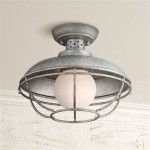Acoustic tile ceilings are a great way to reduce noise and create a comfortable, peaceful atmosphere in any room. They are popular in offices, classrooms, and recording studios alike, as they can help absorb sound and reduce reverberation. Installing an acoustic tile ceiling can be a great way to improve the acoustics of the space, but it can also be a daunting task. In this article, we’ll discuss everything you need to know about installing an acoustic tile ceiling.
Choosing the Right Acoustic Tile
The first step in installing an acoustic tile ceiling is to choose the right tile. It’s important to select a tile that is designed to absorb sound, as this will help reduce the noise in the room. When selecting an acoustic tile, it’s important to consider the size of the tile, the shape of the tile, the color of the tile, and the material the tile is made of. Different materials can absorb sound in different ways, so it’s important to choose a tile that is designed for the specific type of sound you want to absorb.
Preparing the Ceiling for Tile Installation
Before installing the tiles, it’s important to make sure the ceiling is properly prepared. First, the ceiling should be inspected for any cracks, holes, or other damage that could affect the installation. If any damage is found, it should be repaired before the tiles are installed. It’s also important to make sure the ceiling is clean and free of dust and debris, as this can affect the adhesion of the tiles. Once the ceiling is properly prepared, it’s time to begin the installation.
Installing the Acoustic Tiles
Installing acoustic tiles is relatively straightforward, but it’s important to take your time and be precise. Start by measuring the ceiling and marking the tile locations. Once the tiles are marked, use a level to ensure they are installed in a straight line. Once the tiles are in place, they should be secured with adhesive or nails. It’s important to make sure the tiles are properly secured, as this will ensure they stay in place and reduce the risk of any damage or shifting.
Maintaining Your Acoustic Tile Ceiling
Once the acoustic tile ceiling is installed, it’s important to maintain it properly. Regularly check the tiles for any signs of damage or wear and tear. It’s also important to vacuum or dust the tiles on a regular basis to prevent dust and debris from accumulating. Additionally, it’s important to inspect the adhesive or nails used to secure the tiles to ensure they are still in good condition.
Conclusion
Installing an acoustic tile ceiling can be a great way to improve the acoustics of a room and reduce noise. However, it’s important to make sure you choose the right tile, prepare the ceiling properly, and install the tiles correctly. Additionally, it’s important to maintain the tiles on a regular basis to ensure they stay in good condition. By following these steps, you can create a peaceful, comfortable environment in any room.















Related Posts








